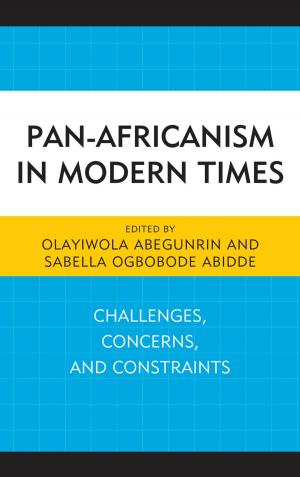Transnational Roots of the Civil Rights Movement
African American Explorations of the Gandhian Repertoire
Nonfiction, Social & Cultural Studies, Social Science, Cultural Studies, Minority Studies, Discrimination & Race Relations, African-American Studies| Author: | Sean Chabot | ISBN: | 9780739145791 |
| Publisher: | Lexington Books | Publication: | December 16, 2011 |
| Imprint: | Lexington Books | Language: | English |
| Author: | Sean Chabot |
| ISBN: | 9780739145791 |
| Publisher: | Lexington Books |
| Publication: | December 16, 2011 |
| Imprint: | Lexington Books |
| Language: | English |
How did African Americans gain the ability to apply Gandhian nonviolence during the civil rights movement? Responses generally focus on Martin Luther King’s “pilgrimage to nonviolence” or favorable social contexts and processes. This book, in contrast, highlights the role of collective learning in the Gandhian repertoire’s transnational diffusion.
Collective learning shaped the invention of the Gandhian repertoire in South Africa and India as well as its transnational diffusion to the United States. In the 1920s, African Americans and their allies responded to Gandhi’s ideas and practices by reproducing stereotypes. Meaningful collective learning started with translation of the Gandhian repertoire in the 1930s and small-scale experimentation in the early 1940s. After surviving the doldrums of the McCarthy era, full implementation of the Gandhian repertoire finally occurred during the civil rights movement between 1955 and 1965. This book goes beyond existing scholarship by contributing deeper and finer insights on how transnational diffusion between social movements actually works. It highlights the contemporary relevance of Gandhian nonviolence and its successful journey across borders.
How did African Americans gain the ability to apply Gandhian nonviolence during the civil rights movement? Responses generally focus on Martin Luther King’s “pilgrimage to nonviolence” or favorable social contexts and processes. This book, in contrast, highlights the role of collective learning in the Gandhian repertoire’s transnational diffusion.
Collective learning shaped the invention of the Gandhian repertoire in South Africa and India as well as its transnational diffusion to the United States. In the 1920s, African Americans and their allies responded to Gandhi’s ideas and practices by reproducing stereotypes. Meaningful collective learning started with translation of the Gandhian repertoire in the 1930s and small-scale experimentation in the early 1940s. After surviving the doldrums of the McCarthy era, full implementation of the Gandhian repertoire finally occurred during the civil rights movement between 1955 and 1965. This book goes beyond existing scholarship by contributing deeper and finer insights on how transnational diffusion between social movements actually works. It highlights the contemporary relevance of Gandhian nonviolence and its successful journey across borders.















